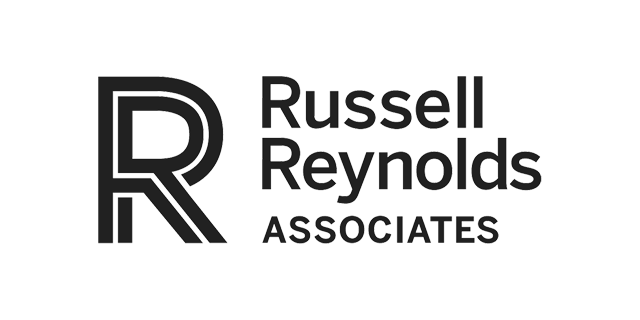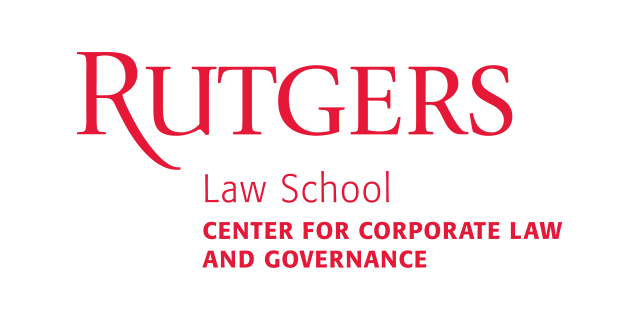The project is conducted by The Conference Board and ESG data analytics firm ESGAUGE, in collaboration with leadership advisory and search firm Russell Reynolds Associates, and Rutgers University’s Center for Corporate Law and Governance.
Something rather unexpected happened in the 2022 proxy season. Amid a growing focus on environmental, social & governance (ESG) issues,[1] and following a 2021 proxy season with record support for shareholder proposals on environmental and social (E&S) topics,[2] average support for E&S shareholder proposals declined compared with 2021. At the same time, opposition to directors and negative votes on say-on-pay proposals increased.
This signals a trend that is expected to continue into 2023: more friction between companies and investors in traditional areas of corporate governance and executive compensation than in E&S areas. Investors will continue to use their votes on director elections and say-on-pay to express their concerns about governance and problematic pay packages, but will likely seek common ground on many E&S issues.
Although this dynamic provides an opportunity for companies, as investors are truly open to hearing companies’ side of the story on E&S issues, companies are not off the hook. In fact, the 2023 proxy season promises to be, yet again, more challenging than previous years, with even more shareholder proposals, lower support for directors and say-on-pay proposals, and increased Big “A” activism, which aims to change corporate strategy.
Insights for What’s Ahead
- The 2023 proxy season is bound to be even more challenging than previous years for the following reasons:
- The overall volume of shareholder proposals will likely continue to rise as a result of 1) the SEC having narrowed grounds for excluding proposals from the company’s proxy statement; 2) new proponents who—drawn by the success of shareholder proposals in previous years—are submitting more proposals and new variations of proposals; and 3) proponents continuing to pursue a variety of agendas in submitting shareholder proposals, including getting press attention and making an ideological point, as opposed to seeking change at a company.
- There will be an increase in “anti-ESG” proposals, which are often more complicated to deal with as the proponents may offer resolutions that are similar to “pro-ESG” proposals but involve different rationales, motivations, and consequences if they are approved.
- Asset managers have adopted policies that will lead to more votes against directors on, among other things, governance practices and problematic compensation packages.
- Investors’ diminishing tolerance for adjustments, discretion, and special grants in executive compensation is expected to result in lower levels of support for company say-on-pay proposals.
- Big “A” shareholder activism is likely to rise, due in part to the current economic environment and the implementation of the universal proxy.
- Climate-related proposals are likely to continue to be a dominant theme in 2023, but we expect a growing number of proposals on certain other environmental and social topics. Look for growing levels of shareholder proposals on issues such as biodiversity, plastic pollution, and deforestation. On social topics, expect to see shareholder proposals focusing on corporate political spending through third-party groups[3] and on workers’ rights (particularly at companies where there is a perceived disconnect between the company’s commitments and actions on freedom of association).
- Declining average support for shareholder proposals on E&S topics is not a sign of ESG backlash but does reflect factors that could well continue into 2023, including 1) the nature of the proposals, especially those that are of lower quality, less relevant to the company’s business, or reflect overreach by the proponent; 2) the rationale offered by the proponent, including those that are notably “anti-ESG” even if the resolution language mirrors pro-ESG proposals; 3) the nature of the recipient, such as companies that already have strong ESG records; and 4) investors seeking common ground with companies on E&S issues, as they are trying to separate the wheat from the chaff in a growing number of shareholder proposals and steer a steady course amid growing scrutiny and multiple conflicting pressures.[4]
- Companies should consider including more practical details in opposition to shareholder proposals in their proxy statements. Major institutional investors recognize that the growing number of shareholder proposals includes an increase in those where the costs and risks of implementation (including unintended consequences) outweigh the benefits. Companies should not be shy about explaining, in clear, specific, and concrete terms, why implementation is not feasible or is inadvisable (e.g., it would result in the release of sensitive information or significant expense). Investors also welcome companies mentioning the proponent’s name in the proxy and describing what the negotiation process looked like.
- Having recent and relevant industry experience on the board may be a company’s best defense in contested director elections. While some activist campaigns feature dissident candidates with strong ESG credentials, the vast majority of actual or threatened proxy fights will feature opposing candidates with strong industry experience. In explaining why they have the right board composition, companies will want to focus not just on filling in a skills matrix, but on explaining how directors add value, including through their experience in the company’s industry or in adjacent industries.
- While the SEC’s recently adopted pay versus performance disclosure rule might get more attention from investors than the CEO pay-ratio rule, complying with the rule (rather than going above and beyond in disclosures) will likely suffice this year. Major institutional investors already have established their own methods for evaluating companies’ compensation plans, so the new SEC rule is unlikely to add much to their analysis. Accordingly, unless there are any particular points that companies feel truly compelled to address (such as anomalies in pay vs. performance charts), companies can remain in compliance mode.
- The increase in client-directed voting may shift more influence back to proxy advisors. Institutional investors that are expanding the opportunity for certain clients to participate in voting decisions will likely have the unintended consequence of amplifying proxy advisors’ voices, as clients are typically presented with proxy advisors’ voting policies.
- Companies should be prepared to deal with ESG backlash during this proxy season. While not altering their policies, companies are now considering making fewer public pronouncements on social issues, focusing more on actions and internal communications, and tying their stands on social issues more closely to business strategy.[5] Shareholder proposals, however, may force companies to take a public stand that can serve as fodder for anti-ESG activists. By clearly focusing on why the company’s position on an ESG issue is “good for business”—and by sticking to that theme—companies may avoid being pulled into unnecessarily distracting debates.
All of the data presented in this report, unless otherwise noted, are for the full Russell 3000.
[3] The Center for Political Accountability’s new proposal (the “Model Code Resolution”) calls on companies to “adopt a policy requiring that any trade association, social welfare organization, or organization organized and operated primarily to engage in political activities that seeks financial support from the company agree to report to the company, at least annually, the organization’s expenditures for political activities, including the amount spent and the recipient, and that each such report be posted on company’s website.”
The project is conducted by The Conference Board and ESG data analytics firm ESGAUGE, in collaboration with leadership advisory and search firm Russell Reynolds Associates, and Rutgers University’s Center for Corporate Law and Governance.
Something rather unexpected happened in the 2022 proxy season. Amid a growing focus on environmental, social & governance (ESG) issues,[1] and following a 2021 proxy season with record support for shareholder proposals on environmental and social (E&S) topics,[2] average support for E&S shareholder proposals declined compared with 2021. At the same time, opposition to directors and negative votes on say-on-pay proposals increased.
This signals a trend that is expected to continue into 2023: more friction between companies and investors in traditional areas of corporate governance and executive compensation than in E&S areas. Investors will continue to use their votes on director elections and say-on-pay to express their concerns about governance and problematic pay packages, but will likely seek common ground on many E&S issues.
Although this dynamic provides an opportunity for companies, as investors are truly open to hearing companies’ side of the story on E&S issues, companies are not off the hook. In fact, the 2023 proxy season promises to be, yet again, more challenging than previous years, with even more shareholder proposals, lower support for directors and say-on-pay proposals, and increased Big “A” activism, which aims to change corporate strategy.
Insights for What’s Ahead
- The 2023 proxy season is bound to be even more challenging than previous years for the following reasons:
- The overall volume of shareholder proposals will likely continue to rise as a result of 1) the SEC having narrowed grounds for excluding proposals from the company’s proxy statement; 2) new proponents who—drawn by the success of shareholder proposals in previous years—are submitting more proposals and new variations of proposals; and 3) proponents continuing to pursue a variety of agendas in submitting shareholder proposals, including getting press attention and making an ideological point, as opposed to seeking change at a company.
- There will be an increase in “anti-ESG” proposals, which are often more complicated to deal with as the proponents may offer resolutions that are similar to “pro-ESG” proposals but involve different rationales, motivations, and consequences if they are approved.
- Asset managers have adopted policies that will lead to more votes against directors on, among other things, governance practices and problematic compensation packages.
- Investors’ diminishing tolerance for adjustments, discretion, and special grants in executive compensation is expected to result in lower levels of support for company say-on-pay proposals.
- Big “A” shareholder activism is likely to rise, due in part to the current economic environment and the implementation of the universal proxy.
- Climate-related proposals are likely to continue to be a dominant theme in 2023, but we expect a growing number of proposals on certain other environmental and social topics. Look for growing levels of shareholder proposals on issues such as biodiversity, plastic pollution, and deforestation. On social topics, expect to see shareholder proposals focusing on corporate political spending through third-party groups[3] and on workers’ rights (particularly at companies where there is a perceived disconnect between the company’s commitments and actions on freedom of association).
- Declining average support for shareholder proposals on E&S topics is not a sign of ESG backlash but does reflect factors that could well continue into 2023, including 1) the nature of the proposals, especially those that are of lower quality, less relevant to the company’s business, or reflect overreach by the proponent; 2) the rationale offered by the proponent, including those that are notably “anti-ESG” even if the resolution language mirrors pro-ESG proposals; 3) the nature of the recipient, such as companies that already have strong ESG records; and 4) investors seeking common ground with companies on E&S issues, as they are trying to separate the wheat from the chaff in a growing number of shareholder proposals and steer a steady course amid growing scrutiny and multiple conflicting pressures.[4]
- Companies should consider including more practical details in opposition to shareholder proposals in their proxy statements. Major institutional investors recognize that the growing number of shareholder proposals includes an increase in those where the costs and risks of implementation (including unintended consequences) outweigh the benefits. Companies should not be shy about explaining, in clear, specific, and concrete terms, why implementation is not feasible or is inadvisable (e.g., it would result in the release of sensitive information or significant expense). Investors also welcome companies mentioning the proponent’s name in the proxy and describing what the negotiation process looked like.
- Having recent and relevant industry experience on the board may be a company’s best defense in contested director elections. While some activist campaigns feature dissident candidates with strong ESG credentials, the vast majority of actual or threatened proxy fights will feature opposing candidates with strong industry experience. In explaining why they have the right board composition, companies will want to focus not just on filling in a skills matrix, but on explaining how directors add value, including through their experience in the company’s industry or in adjacent industries.
- While the SEC’s recently adopted pay versus performance disclosure rule might get more attention from investors than the CEO pay-ratio rule, complying with the rule (rather than going above and beyond in disclosures) will likely suffice this year. Major institutional investors already have established their own methods for evaluating companies’ compensation plans, so the new SEC rule is unlikely to add much to their analysis. Accordingly, unless there are any particular points that companies feel truly compelled to address (such as anomalies in pay vs. performance charts), companies can remain in compliance mode.
- The increase in client-directed voting may shift more influence back to proxy advisors. Institutional investors that are expanding the opportunity for certain clients to participate in voting decisions will likely have the unintended consequence of amplifying proxy advisors’ voices, as clients are typically presented with proxy advisors’ voting policies.
- Companies should be prepared to deal with ESG backlash during this proxy season. While not altering their policies, companies are now considering making fewer public pronouncements on social issues, focusing more on actions and internal communications, and tying their stands on social issues more closely to business strategy.[5] Shareholder proposals, however, may force companies to take a public stand that can serve as fodder for anti-ESG activists. By clearly focusing on why the company’s position on an ESG issue is “good for business”—and by sticking to that theme—companies may avoid being pulled into unnecessarily distracting debates.
All of the data presented in this report, unless otherwise noted, are for the full Russell 3000.
[3] The Center for Political Accountability’s new proposal (the “Model Code Resolution”) calls on companies to “adopt a policy requiring that any trade association, social welfare organization, or organization organized and operated primarily to engage in political activities that seeks financial support from the company agree to report to the company, at least annually, the organization’s expenditures for political activities, including the amount spent and the recipient, and that each such report be posted on company’s website.”








